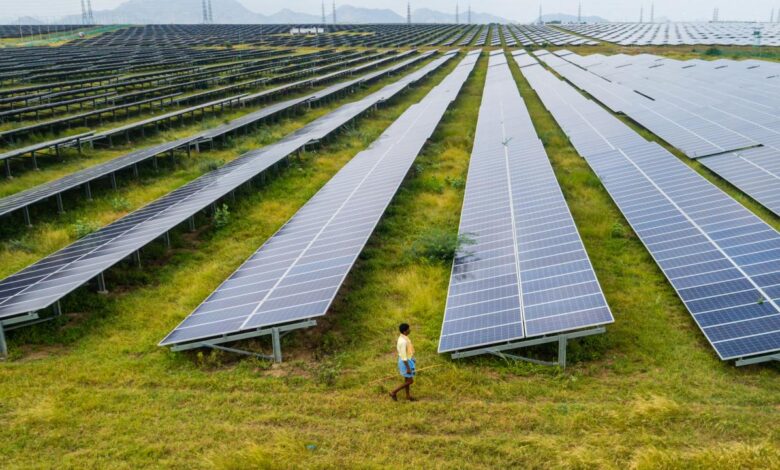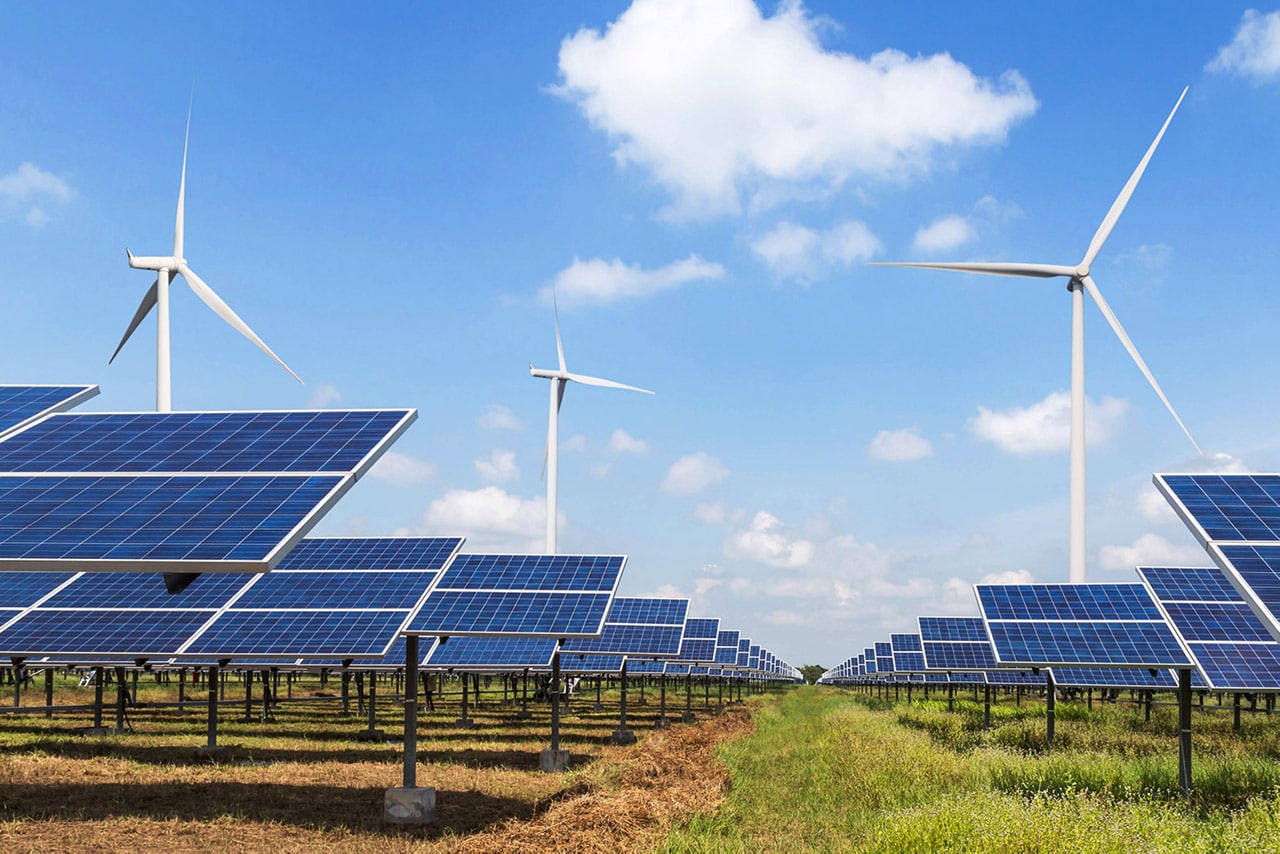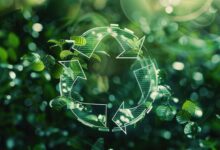Clean Energy’s Breakthroughs Ensure A Green Future

The global energy landscape is undergoing a radical transformation. Driven by the urgent need to combat climate change and reduce our reliance on fossil fuels, a wave of clean energy breakthroughs is reshaping how we power our world. This isn’t just about a slow transition; it’s a rapid acceleration of innovation that promises a more sustainable, resilient, and equitable energy future. From advancements in solar and wind power to the emergence of next-generation technologies like nuclear fusion, the race to decarbonize is on. This article will take a deep dive into the most significant breakthroughs in clean energy, their profound implications for industry and society, the challenges that still need to be addressed, and the immense opportunities that lie ahead.
The Power of the Sun and Wind

For years, solar and wind power were considered niche, expensive alternatives. Today, they are the cheapest forms of new electricity generation in many parts of the world, and their continued evolution is at the heart of the clean energy revolution.
A. Solar Power
The efficiency and affordability of solar photovoltaic (PV) technology have improved at a staggering pace. This is a direct result of decades of research and a massive increase in manufacturing scale, particularly in Asia.
- Perovskite Solar Cells: Traditional silicon-based solar panels are now being challenged by a new generation of materials, such as perovskites. These materials are cheaper to produce, more efficient at converting sunlight into electricity, and can be used in a wider range of applications, including transparent and flexible solar panels for windows and clothing.
- Concentrated Solar Power (CSP): While PV technology uses panels to capture sunlight directly, CSP uses mirrors to focus sunlight onto a single point, generating immense heat that can be used to power a steam turbine. This technology has the advantage of being able to store energy in molten salt, allowing it to generate electricity even after the sun goes down.
- Solar Desalination: In arid regions, solar power is being used to purify seawater and make it drinkable, offering a sustainable solution to water scarcity and a powerful example of clean energy’s multi-faceted benefits.
The ubiquity of solar power means it can be deployed on a massive scale, from large utility-scale solar farms to individual rooftop panels on homes and businesses.
B. Wind Power
Wind power is a mature and highly effective clean energy source, but new breakthroughs are making it even more powerful and reliable.
- Bigger Turbines: The newest wind turbines are immense, with blades longer than the wingspan of a jumbo jet. This allows them to capture more wind energy, increasing the output per turbine and making offshore wind farms particularly powerful.
- Floating Wind Turbines: The vast majority of offshore wind power is generated in shallow waters. The development of floating wind turbines will unlock a new frontier, allowing us to harness the stronger, more consistent winds in deep-water oceans, far from the shore.
- Predictive AI: The intermittency of wind and solar power has always been a challenge. However, the use of AI-powered predictive analytics can forecast wind patterns and solar intensity with greater accuracy, allowing grid operators to better manage supply and demand and integrate more renewable energy into the grid.
The Storage Revolution
The biggest challenge for renewable energy has always been its intermittency—the sun doesn’t always shine, and the wind doesn’t always blow. Breakthroughs in energy storage are solving this problem, making a fully renewable grid a realistic possibility.
A. Lithium-Ion Batteries and Beyond
While lithium-ion batteries have powered the electric vehicle revolution, their cost and performance are also making them a viable solution for large-scale grid storage.
- Grid-Scale Storage: Massive battery storage facilities are being built to store excess solar and wind energy and then release it back into the grid during peak demand or when renewable generation is low. This acts as a buffer, stabilizing the grid and making it more resilient.
- Next-Generation Batteries: Researchers are developing a new generation of batteries that are cheaper, safer, and more sustainable than lithium-ion. This includes technologies like solid-state batteries, flow batteries, and sodium-ion batteries, which could further drive down the cost of energy storage.
- EVs as Mobile Batteries: As the number of electric vehicles on the road increases, they could be used as a distributed network of energy storage. A concept known as Vehicle-to-Grid (V2G) allows EVs to not only draw power from the grid but also to feed it back during times of high demand, essentially turning every EV into a mobile power plant.
B. Alternative Storage Solutions
Batteries are not the only solution for energy storage. Other technologies are being developed for long-duration and seasonal storage.
- Pumped Hydroelectric Storage: This is a long-proven method where excess energy is used to pump water to a higher reservoir. When power is needed, the water is released, turning a turbine to generate electricity. While geographically constrained, it is highly efficient and scalable.
- Hydrogen Fuel: Green hydrogen, produced by using renewable electricity to split water, can be stored for long periods and used to power vehicles, generate electricity, or replace natural gas in industrial processes. This is a key part of the solution for hard-to-decarbonize sectors like heavy industry and long-haul transportation.
The Nuclear Renaissance

For decades, nuclear power has been a controversial energy source. However, a new wave of innovation is addressing the historical concerns about safety, waste, and cost.
A. Small Modular Reactors (SMRs)
SMRs are a new class of nuclear reactors that are smaller, more flexible, and can be mass-produced in a factory setting.
- Enhanced Safety: SMRs are designed with “passive safety” features, meaning they can shut down automatically and safely without human intervention or external power, making them inherently more secure than traditional reactors.
- Reduced Cost and Construction Time: Their smaller size and modular design mean they can be built and deployed more quickly and at a lower cost, making nuclear power a more economically viable option.
- Flexible Deployment: SMRs can be deployed in a wide range of locations, from remote communities to industrial sites, providing a reliable source of carbon-free power.
B. The Holy Grail
The ultimate clean energy breakthrough would be nuclear fusion, the process that powers the sun. Fusion reactors would produce immense amounts of energy with virtually no carbon emissions, no long-lived radioactive waste, and with a fuel source (hydrogen) that is abundant in seawater. While a commercial fusion reactor is still a decade or more away, recent breakthroughs by private companies and public research labs have brought it closer to reality than ever before. This could represent the final, decisive step in solving our energy needs for centuries to come.
Challenges and Opportunities
While the breakthroughs are cause for optimism, the transition to a clean energy future is not without its challenges.
A. Infrastructure and Grid Modernization
Our current energy grid was built for a centralized, fossil-fuel-based system. Transitioning to a decentralized, renewable energy system requires a massive upgrade of our infrastructure, including:
- Smart Grids: A modern, intelligent grid is needed to manage the variable supply of renewable energy and optimize energy distribution in real-time.
- Transmission Lines: New high-voltage transmission lines are needed to move clean energy from where it is generated (e.g., wind farms in the desert) to where it is needed (e.g., cities).
- Digital Integration: The entire system needs to be digitally integrated, with sensors and software managing every aspect of energy production, storage, and consumption.
B. Policy and Economic Incentives
The market on its own will not be enough to drive this transition at the speed required to meet our climate goals. Governments must play a critical role by:
- Carbon Pricing: Implementing a carbon tax or a cap-and-trade system can make fossil fuels more expensive, leveling the playing field for clean energy.
- Subsidies and Tax Credits: Continued financial support for the deployment of clean energy technologies is essential to accelerate their adoption.
- Streamlined Permitting: Regulatory hurdles and slow permitting processes can significantly delay clean energy projects. Governments can streamline these processes to speed up deployment.
C. Supply Chain and Resource Security
The transition to clean energy creates a new set of supply chain challenges. The demand for critical minerals like lithium, cobalt, and rare earth elements is skyrocketing, raising concerns about:
- Ethical Sourcing: Ensuring that these minerals are mined and processed in a socially and environmentally responsible manner.
- Geopolitical Competition: The concentration of mineral processing in a few countries creates a new point of geopolitical tension.
The development of new recycling technologies and sustainable alternatives is crucial to address these issues.
Conclusion
The current era is a pivotal moment in the history of human energy consumption. The days of fossil fuels are numbered, not just because of environmental necessity, but because clean energy is now technologically superior and economically more viable. The remarkable breakthroughs in solar technology, from high-efficiency perovskite cells to the potential for solar desalination, are making the sun an inexhaustible and ubiquitous power source. Similarly, innovations in wind power, such as floating turbines and AI-powered forecasting, are unlocking new and powerful sources of clean electricity. However, the true game-changer lies in the breakthroughs in energy storage. The rapid decline in battery costs, coupled with the potential of next-generation chemistries and the intelligent use of electric vehicles, is effectively solving the intermittency problem that has long plagued renewables, paving the way for a stable and reliable clean grid.
Furthermore, a new generation of nuclear technology, in the form of small modular reactors, is providing a safe, clean, and scalable alternative to traditional nuclear power, addressing many of the historical concerns about cost and safety. The ultimate prize, nuclear fusion, is no longer a distant dream but an active and intensely pursued scientific and engineering goal that could provide an almost limitless supply of clean energy for all of humanity. Yet, this transition is not without its challenges. It requires a fundamental modernization of our energy infrastructure, from a centralized to a decentralized, smart grid. It also necessitates a clear and consistent policy framework, including carbon pricing and streamlined regulations, to accelerate the shift away from fossil fuels. Finally, we must address the new supply chain challenges posed by the increased demand for critical minerals, ensuring that the transition is ethical and sustainable. The journey to a clean energy future is a collaborative one, requiring the combined efforts of scientists, engineers, policymakers, and the public. These breakthroughs are not just about technology; they are about building a more resilient, equitable, and sustainable world for generations to come. The clean energy revolution is here, and its acceleration is our best hope for a better future.


